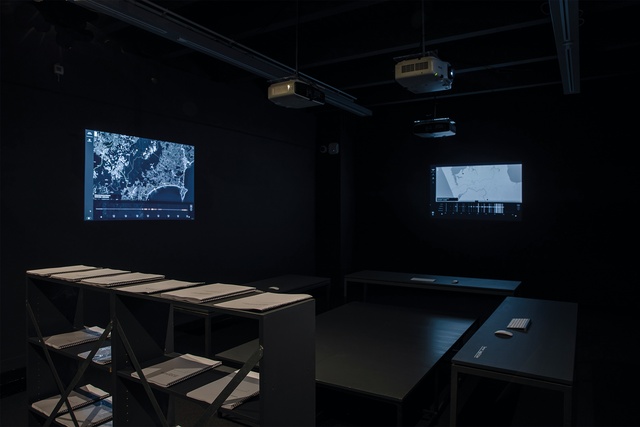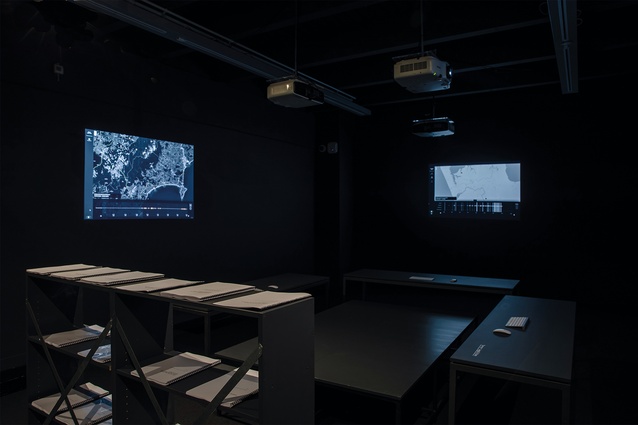Review: Violent Legalities
Rebecca Kiddle visits Violent Legalities at Wellington’s Te Pātaka Toi/Adam Art Gallery and finds a controversial exhibition that is part art, part research.
Art has long been used to increase the political consciousness of the wider public. Violent Legalities is an exhibition that is part art and part research, exemplifying the richness that can come from interdisciplinarity. It combines anthropology, art, architecture and software design to create an exhibition that provokes us to acknowledge the widespread, systematic and ongoing instances of violence against non-Pākehā in Aotearoa New Zealand.
Led by Dr Karamia Müller (School of Architecture and Planning, University of Auckland) and Lachlan Kermode, software lead at human rights agency Forensic Architecture (Goldsmiths, University of London), and supported by four collaborators, the project seeks to map, through both time and space, more than 500 acts of violence and the whakapapa of, interrelationships between and accumulation of those acts.

The large body of research on offer to the viewer includes hefty government documents, such as Waitangi Tribunal reports, with excerpts from these intertwined through the on-screen interactive map display. Hard copies and digital media interplay to signal the complex ways in which state legislation, in the case of the Tūhoe raids, or lack of intervention, in the case of the Christchurch shootings, has enabled violence against those who are seen as ‘other’ in this country. The digital platform remains a dynamic system, which the contributors will continue to develop over time, and the already-large body of research they have gathered would suggest there is much more they will do with the platform.
The exhibition sets out three categories of violent activity: 1) Terror Legalities and, in particular, the Christchurch shootings in 2019; 2) Treaty Legalities, with a focus on Ngāi Tūhoe and both historical and contemporary examples of the hyper-policing of Māori; and 3) Moral Legalities, focused on the high rates of incarceration of Māori. All this makes for a hard-hitting analysis that quantifies these acts of violence in new and interesting ways.

However, I walked away from the exhibition with three quibbles. Firstly, the project’s ongoing aim, as outlined by curator Stephen Cleland, is to “continue to build into an expansive platform, which identifies both conscious and unconscious biases systemic to our legal system, within a cartographic platform specifically developed to address the particular challenges facing our bicultural and multifaceted nation”. It is, then, ironic that the contributors don’t articulate their positionality well, with respect to their research subjects. The biographies indicate that these are all well-educated people, dispersed across the world. What are not explained well are the cultural and social relationships the project team, apart from Müller, has with the subjects of its study; these may give light to “conscious and unconscious biases” inherent in the team itself.
Much of the material of focus centres on Māori communities and yet there is no clear understanding of how connected the researchers/artists are to these communities. There are many micro decisions that have been made throughout the project, including the choice of cases, the analytical frame overlaid on the material to draw out what the contributors felt was important, the media of representation and even the way in which the project is being disseminated, that all required, in my opinion, those making those decisions to bring their conscious and unconscious biases (i.e. understandings of what counts as knowledge and art) to the table.

Secondly, regarding where the work is exhibited, who is served if it is confined to an art gallery in the bowels of an academic institution? The team may well have plans for wider dissemination, so this may be an unfair criticism, but these are not immediately obvious. The premise of the project and the body of work is something that deserves a wider viewing and I’d hate to see its dissemination limited to the middle-class few who frequent art galleries followed by a flat white and Florentine. Whilst the website also offers a way in, it would be useful to consider dissemination back to the ‘researched’ communities, including Māori, Tūhoe particularly, Christchurch’s Muslim community and, if it is to be game-changing, central government politicians and bureaucrats.
Finally, and this is a point around curation, very good eyesight is required for engaging with the set-up. One of the screens, in particular, sits further away than the others, which makes for difficult navigation and comprehension. Yet, once I was home and could play around on the maps close up, the richness of the digital platform became clear – quite literally.
Violent Legalities is an intriguing project, which deserves our attention, given its subject matter. However, I left with a few niggles that require further thought if the overarching narrative is to fit the practice. This is an exhibition best viewed with good glasses and a Florentine or fry-bread in your pocket for sustenance, as you’ll need a good chunk of time to take it all in.
Hear more from Karamia Müller about Violent Legalities here, in conversation with Sarosh Mulla.












